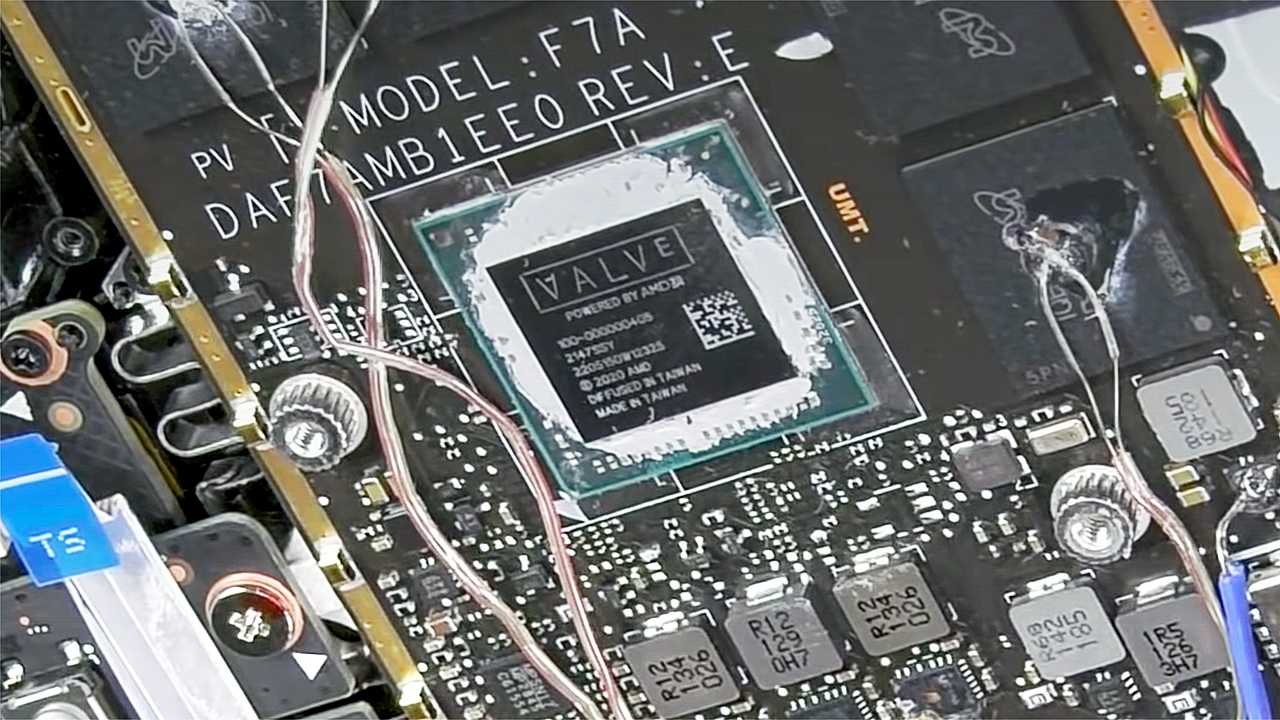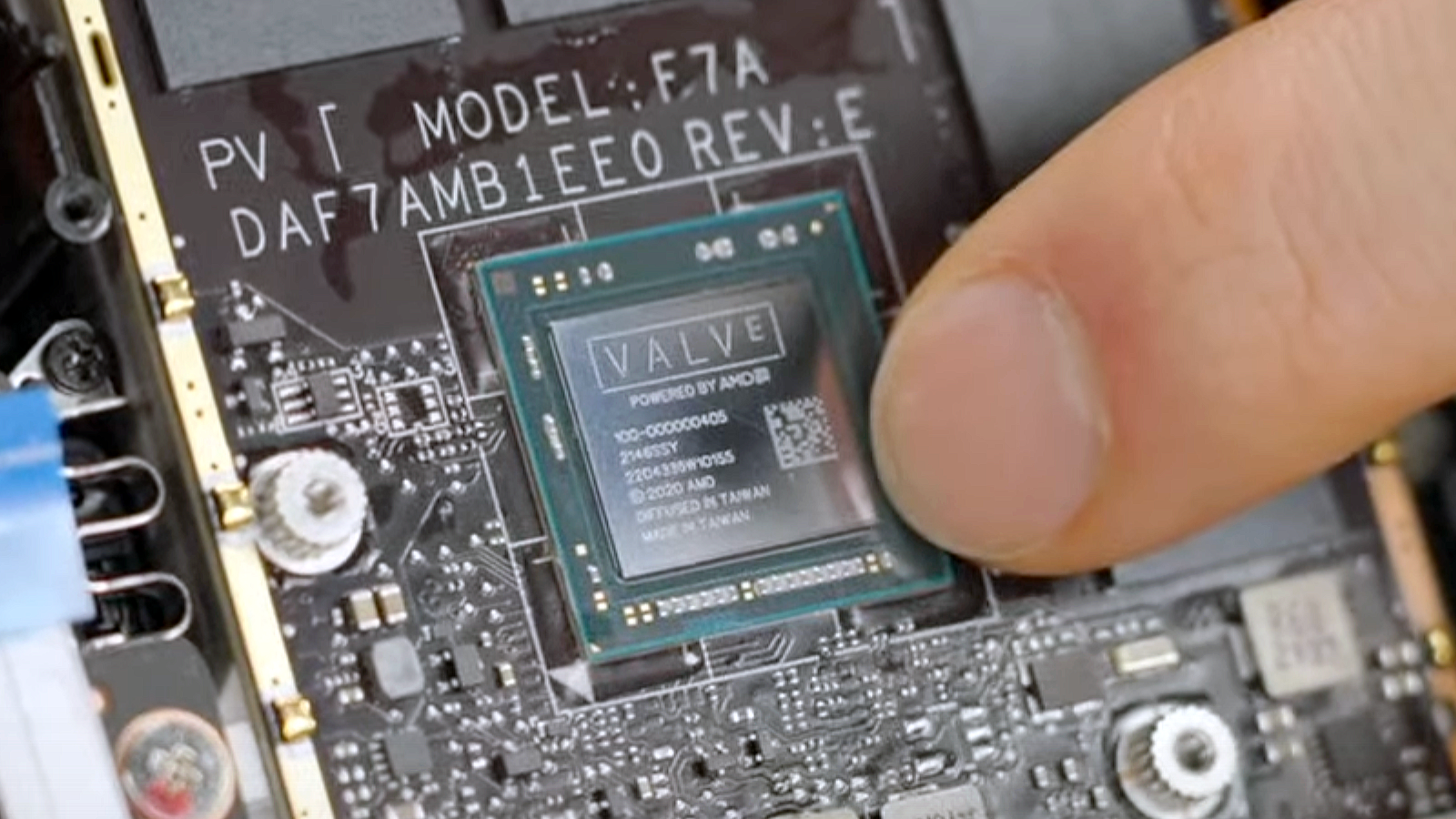Valve Steam Deck's Custom AMD SoC Pictured Up Close
When Valve first announced its Steam Deck console last year and said that it would use an AMD system-on-chip, we thought that the company would take a page from Aya Neo's book with an off-the-shelf SoC. But, as it turns out, the processor used by Valve is a custom SoC that carries the company's brand, which suggests that this SKU is exclusive to the console developer.
Just like semi-custom SoCs that power game consoles from Microsoft and Sony, the Steam Deck's processor (previously referred to as Aerith and Van Gogh) carries Valve's logotype to emphasize that the chip belongs to the console. While the key building blocks of the Steam Deck SoC — four Zen 2 cores with SMT at 2.40 to 3.50 GHz and eight RDNA 2 compute units at 1.0 to 1.60 GHz — are used for other products, the exact processor is tuned to operate within a 4 to 15 Watt TDP range. Given a rather complex voltage regulating module for the SoC (Videos of Steam Deck dissection and VRM have been published by Gamers Nexus and Linus Tech Tips), it looks like AMD and Valve have spent quite some time tuning the chip for the console to get the right performance at a low TDP.”

Given that we are dealing with a customized design (and not an off-the-shelf SoC with Zen 2 cores and outdated Radeon RX Vega GPU), it is evident that Valve has invested significant resources in it. This in turn indicates that Valve is adamant about making sure that its mobile Steam Deck game console is a success.
But while the SoCs for the PlayStation 5 and Xbox Series S/X do not carry any AMD logotypes, this chip is said to be 'Powered by AMD' and has a small AMD logo on it. It remains to be seen if the Steam Deck's SoC will be released commercially, similar to how AMD sells its 4700S processors originally meant for PlayStation 5.
The usage of a custom SoC and in-house software gives Valve a definite edge over other mobile devices running AMD SoCs. Consoles like AyaNeo can be cloned by other hardware makers while maintaining performance and optimizations that game developers introduced to ensure sufficient framerate on such handhelds. By contrast, it will not be that easy with Steam Deck, at least not before AMD introduces its next-generation low-power SoCs with RDNA 2 graphics.
The Steam Deck is available from Valve for $399, $529 or $649, depending on the version.
Get Tom's Hardware's best news and in-depth reviews, straight to your inbox.

Anton Shilov is a contributing writer at Tom’s Hardware. Over the past couple of decades, he has covered everything from CPUs and GPUs to supercomputers and from modern process technologies and latest fab tools to high-tech industry trends.
